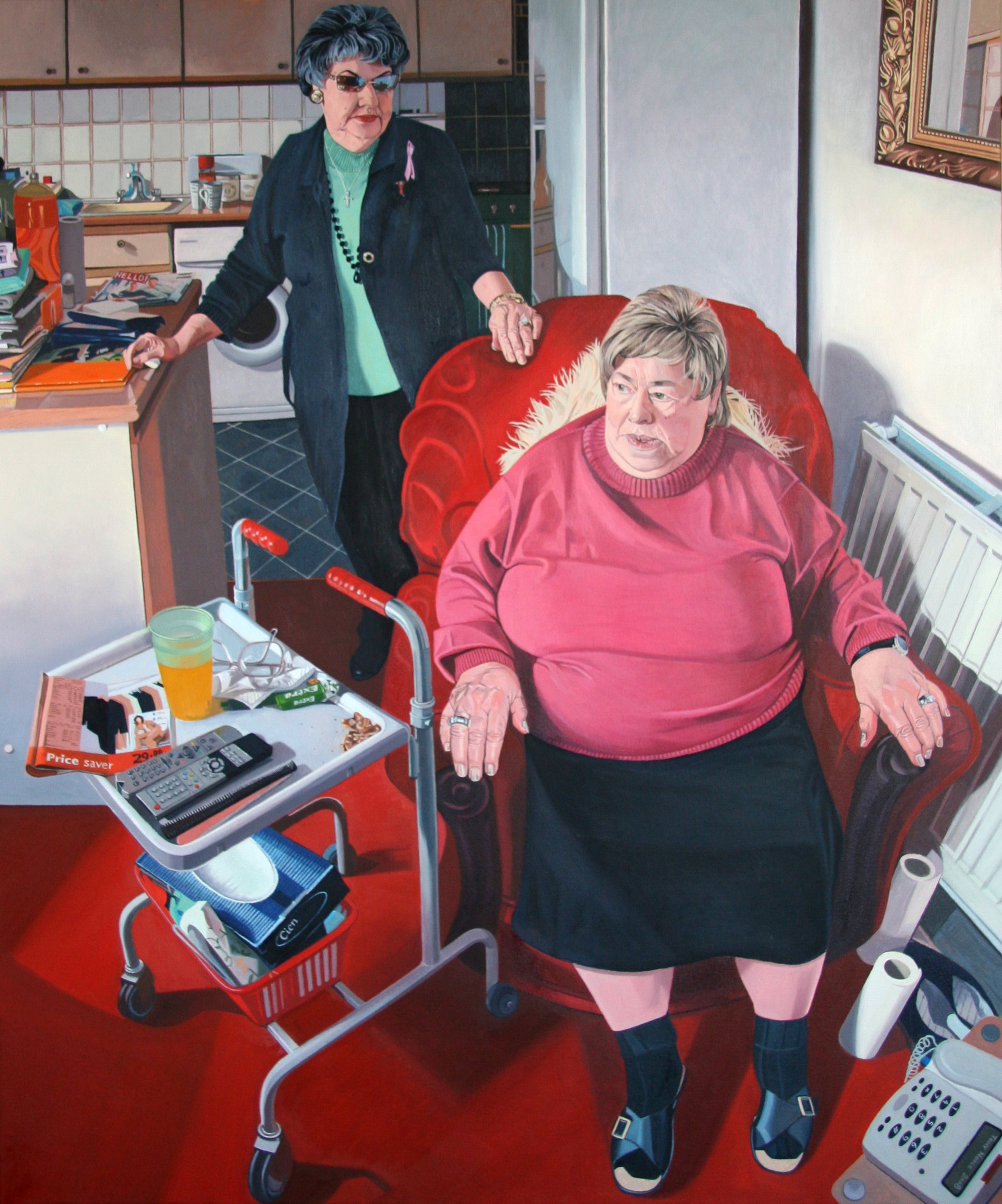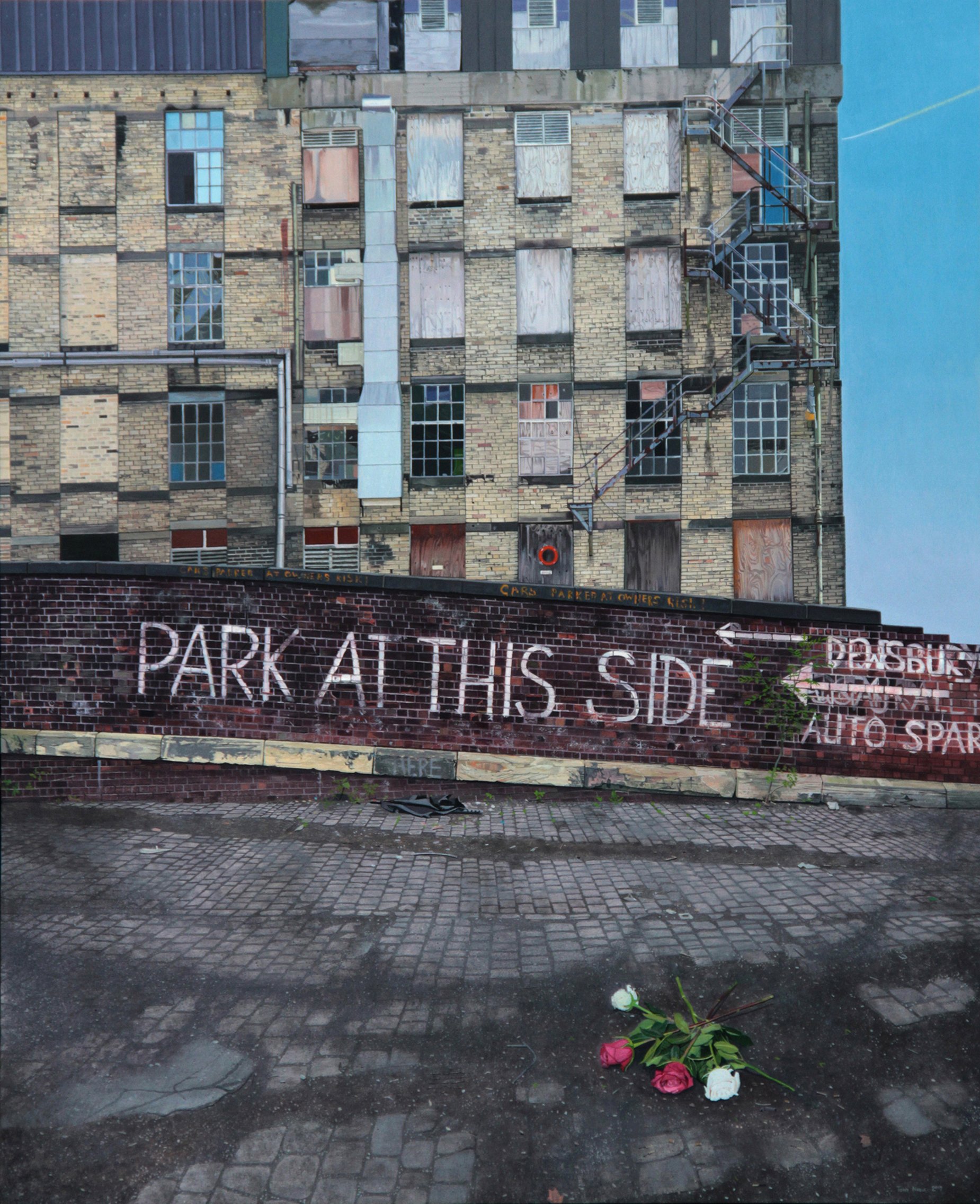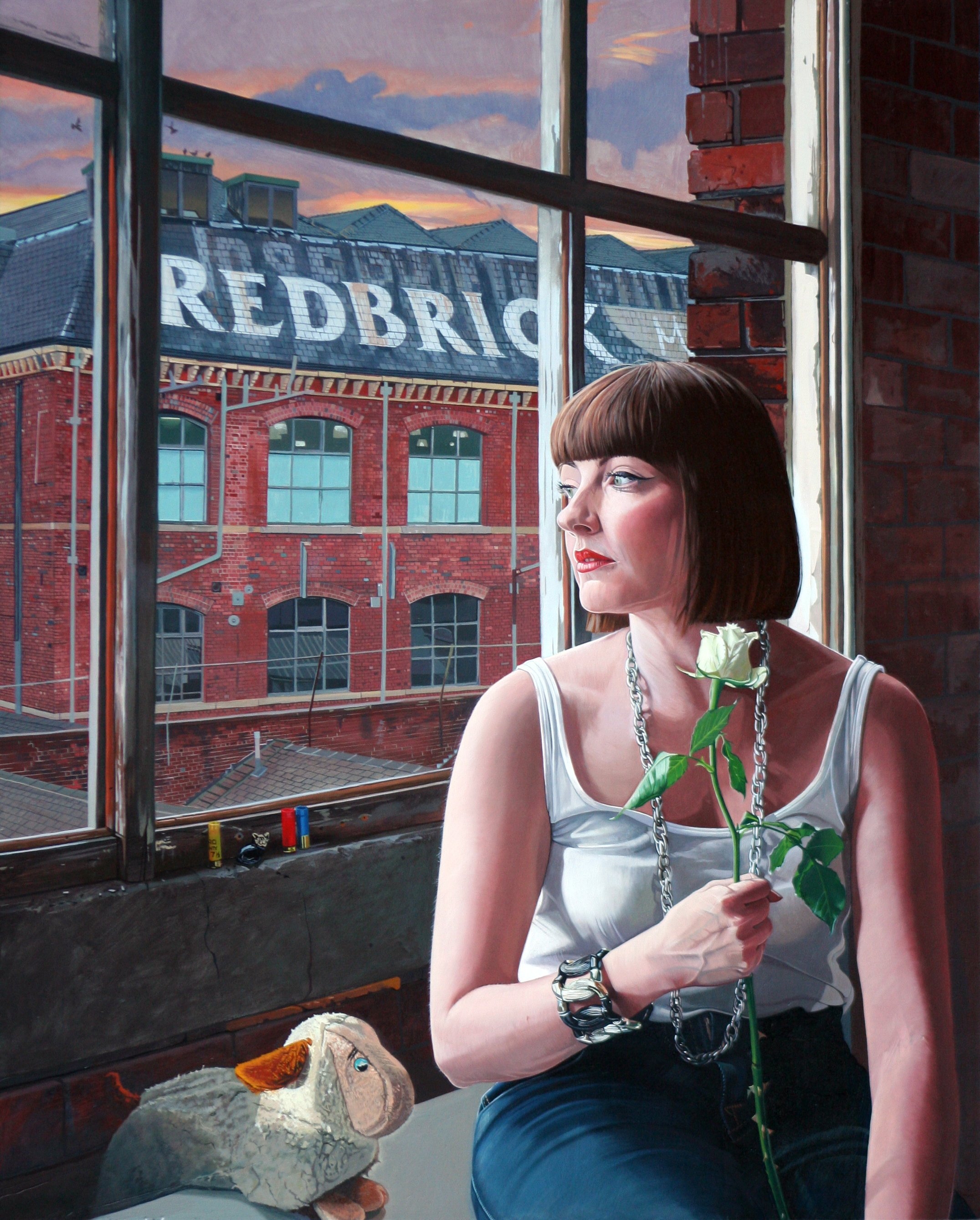ARTIST INTERVIEW: Tony Noble
Tony Noble
Please can you give me an introduction about yourself?
After working as a primary school teacher for close to 30 years, I decided in 2008 that it was time to follow my passion and devote my time fully to developing my work as an artist. With help from local businessman, Mr Stephen Battye, I set up a studio in Alexandra Mill, Batley in 1998. In 2008 I moved to Redbrick Mill, Batley, where I am still based today. Since 2008, I have had some success in many major national exhibitions.
How did you get into art? What inspired you?
I have always loved drawing, and art was always my favourite subject at school, where I was very lucky to have two great teachers; Norman Defoe and Don Reid, who gave me every encouragement. From school I went to do a foundation course at the Batley School of Art. I loved every minute I was there, and again benefitted from having great teachers. After foundation, I went to Loughborough College of Art where I studied Fine Art for 3 years. Again, this was a joyful time. It’s very significant that at this time, 1976-79, students were given grants to go to study, so there were no student loans or course fees to worry about. In fact, because I managed to sell a few pieces from my degree show, I actually left college with money in the bank!
Describe your creative process; from start to finish of a painting. Where do you find your inspiration?
My creative process varies with the sort of work I’m doing. If it’s a portrait, I like to draw and paint studies initially from life wherever this is practicable. At the same time, I will take photographs of the sitters in different poses and different settings which will help to inform the final painting. I like to try to make portraits which tell much more about the sitters beyond their physical appearance, so always include references to their lives and their interests.
When working on landscapes, I usually start with a combination of drawings and photographs. I occasionally do plein air studies in paint, though I do find the practicality of this process is often frustrating, usually involving large chunks of ‘dead’ time. I prefer to draw in a sketchbook, make notes and take photographs in the beginning. I then take this information back to the studio where I decide on the approach I’m going to take.
Have your surroundings influenced your art?
Much of my work over the past 20+ years has been focussed in the urban landscape around my home town of Batley, West Yorkshire. I am constantly on the look-out for new subjects and always carry some form of camera with me.
I feel I have become both an archivist for and commentator on the state of the area. I love the aesthetics of Victorian industrial and civic architecture and enjoy seeing how it has been sometimes neglected, sometimes abused, sometimes transformed and adapted over time. I'm also very interested in the more 'ordinary', domestic architecture and how it sits in the landscape, reflecting aspects of the lives of the people who live or have lived in and amongst it. I like to question locations - What is its purpose? What is its potential? Why does it look the way it does? What can we learn about contemporary life and contemporary attitudes and ideals through studying it?
When I discover a building or location of potential, I make studies and carefully consider the atmosphere or mood within the scene. I introduce objects or creatures to show evidence of life and activity, to help generate an open narrative. I rarely include people in the landscape, as I feel that once included a human figure becomes the focus of the painting, dominating any potential narrative. Some may describe the places I choose to paint as ordinary, even bleak or boring, but I like to think of them as extraordinary and beautiful. My paintings are depictions of both real and invented places - amalgamations of different aspects of various locations.
Tell me about a particular piece of work you are proud of and why?
I am still very fond and proud of the painting, “Portrait of my mother-in-law, Anne, and her sister, Auntie Audrey”. This was the first painting I ever had accepted for a major exhibition, The BP Portrait award Exhibition at the National Portrait Gallery, 2008. This was the first time I felt that I had done work which put me on a stage where I knew my work would be widely seen and receive some sort of critical acclaim. At the exhibition preview, I was delighted to have the chance to meet Humphrey Ocean RA, a painter I had admired for many years. When I told him who I was he said, “I know your name. I saw your work this morning in The Times!” I felt like I had taken a great step forward. A few days later I received a phone call from Linda McDougall, the wife of the well-known MP and former presenter of Calendar on Yorkshire TV, Austin Mitchell. Linda very kindly asked me if I would be interested in painting a double-portrait of her and Austin. This was my first ever portrait commission and they were a delight to work with.
How would you describe your style?
I would describe my style as faithfully honest. I think that painting is like handwriting – every painter has their own style which is as individual as a fingerprint. Of course, we can choose what to paint, but I think the way we approach painting comes from within us. I have chosen to paint in a figurative, realistic way and I simply try to do it to the best of my ability. I know that I’m not a virtuoso like Rembrandt or Picasso, but I do my best.
How do you stay inspired and motivated in your work?
Motivation has never been a problem for me. I love to get up in the morning and get to work. When I’m working on one project, I always have an eye on what should follow, what I could do next. I always like to have at least two or three paintings in progress at any one time.
Tell me about your studio
I’m very lucky to have a studio in Redbrick Mill in Batley, West Yorkshire. I’ve had a studio here for the past 14 years, though I’ve only been in my current one for the past three months. It’s a good size, has good light and is even warm in winter. Perfect!
As a painter working with oil paint, a good studio is essential. During lockdown in 2020, I had no access to the studio for many weeks, so had to work at home in a tiny room where I was constantly concerned to not spoil our furnishings, and worried what the cat might end up like if he should manage to sneak undetected onto the palette! I was so glad when lockdown ended.
Who is your favourite artist and why? Do they have an influence on your work?
There are a great many artists whose work I really admire for a variety of reasons. I think of great exhibitions I’ve seen and hope that I’ve taken something from each of them to help push my own work forward.
As an 18 year old A-level student, I went to Amsterdam to visit the Van Gogh Museum which was amazing. I particularly loved his drawings which were incredibly strong, even aggressive, but beautifully controlled and sensitive. And what of his use of colour? Well!
In my early 20’s I was lucky enough to go to the USA where I saw both the Edward Hopper Retrospective at the Whitney Museum and the Picasso Retrospective at MOMA in New York. Amazing!
The Peter Blake Retrospective at the Tate Gallery in 1983 was a real treat. I loved Pop Art and PB, for my money, made the best, most significant British contribution to the movement.
Again, in the early 80’s I was teaching art in a secondary school where one of the students studying A-level art elected to write a personal study on Stanley Spencer. I contacted the Tate Gallery to ask which of their Spencer’s were on display. They replied saying that all the Spencer’s were in storage at the time, but then told me that if I made an appointment we could go to the gallery and we would be shown the paintings in their underground store. What an experience that was! We pulled out rack after rack of paintings, and they were all incredible. Amazing! What a wonderful, visionary artist.
A little later I saw an exhibition of Carel Weight’s paintings at the Wakefield Art Gallery. It was brilliant! Weight was, of course, the head of the painting school at the Royal College of Art and taught both Peter Blake and David Hockney.
Later still, the exhibition ‘George Shaw: the Sly and Unseen Day’ at The Baltic in Gateshead showed us all that great work can come from as humble a beginning as a council estate in Coventry.
Just a few years ago, the Lucien Freud ‘Portraits’ exhibition at the National Portrait Gallery showed us all just how powerful painting can be. Unbelievable!
Whilst I was away at college in 1976, I bought a copy of the book ‘Hockney by Hockney’. I read it in a day. I couldn’t put it down. Hockney talks about why he does what he does, about the joy of looking, seeing, exploring, drawing, painting and photography. In short, it’s about the joy of being an artist. I remind myself of this every day, and if ever I doubt the worth of this art business, I go back and re-read this book, and all is well.
So, my favourite artist? It’s an impossible question. There are too many to choose from, and they are all so individually brilliant.
Why do you think art is important in society?
This is certainly the most difficult question so far!
Art manifests itself in a huge array of different guises and serves many functions in the world today. It can stand as a mirror, encouraging us to look at our world and the way we treat both it and each other. It helps us to recognize our similarities and our differences, and to sometimes celebrate or question the wonderful, the beautiful, the fantastic, the awful.
With the rise of technology, we now have access to all the images that have ever been produced, available at the touch of a keyboard in the palms of our hands. But we must never accept screenshots as equivalents for the original works of art which have been produced through history. A few years ago, on a visit to the Rijksmuseum in Amsterdam I went to see Rembrandt’s remarkable painting, ‘The Night Watch’. What an incredible creation! As I stood there, I couldn’t believe what I was seeing. Not just the amazing painting, but scores of teenage students, iPads in hand, all taking photos of the work and then turning their backs on the actual painting to study their screens! I just hope that when they look at these images later, they remember the magnificence they briefly experienced in real life.
The process of making art is, I think, a primeval instinct present in all of us to varying degrees, and as such it can play an enormous part in helping to preserve our mental health. I know many people who when they have retired from the day-job have taken to art as a way of keeping their mind active and engaged in a most enjoyable, creative way, often in the company of like-minded souls in a very positive, sociable, free environment. My mother-in-law started drawing at the age of 90. She loves drawing from life and works with great concentration.
Art, and drawing in particular, is a very useful conduit in many areas of problem solving. In my work as a teacher, I often used drawing to explain sometimes abstract ideas, especially in science and mathematics.
So, art is a very broad church with arms that reach far and wide. Embracing new technologies, it continues to grow and develop.
I worry that social media is becoming the lazy way of engaging with contemporary life and culture. My own presence on social media is minimal, though I do post details of exhibitions I am involved in on Facebook, but I fear for the quality of anyone’s life who wants to see what I’ve been doing every single day. Get out more! Get a life! Make art!
If you would like to see more of my work, please go to my website at:








